42? Sure, if we’re talking about the answer to the ultimate question of life, the universe and everything. Then there’s 54. That refers to a much easier concept, and we even know the question: How many data centers do you have? Today it’s 54. Let’s discuss how every customer has access to 54+ data centers and how you can take advantage of that with edge-native virtual desktops.
The Data Center Architecture
Most legacy software was built for one customer and for one data center. ISVs focused on making the software as scalable as possible within one data center. Typically, a G2000 company would run 3-4 copies of the solution stack – across North America, EMEA, and APAC – to deliver the best possible performance to users throughout their widely distributed organization.
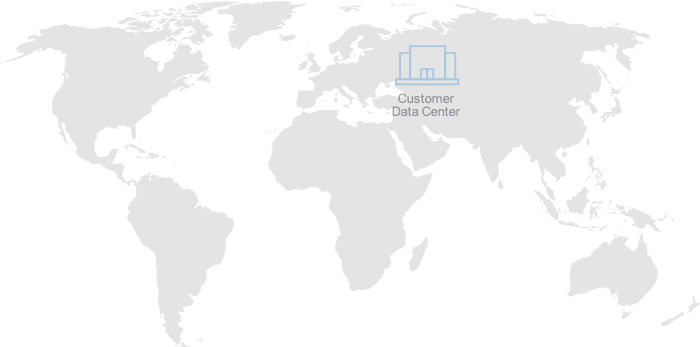
Legacy software was built for one data center
The Cloud is Not Just One Data Center
When we think of the cloud, we often think of it as a singular object: A data center that is run by someone else.
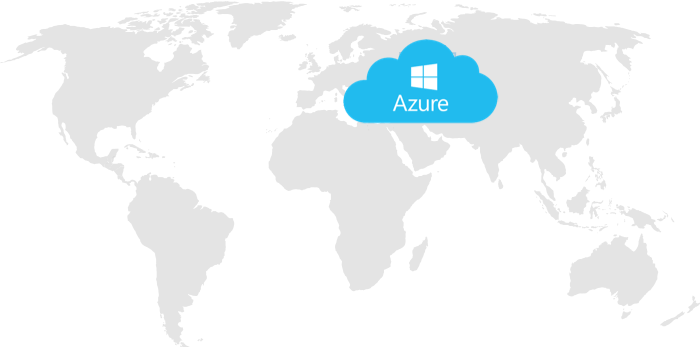
The cloud is often misunderstood as a single data center, operated by someone else
In reality however, the public cloud is tens of data centers distributed across the world and connected by high-performance networking. Today Microsoft Azure has 54 cloud regions worldwide.

The public cloud consists of tens of data centers, with Microsoft Azure at 54+
It stands to reason that legacy software that was designed for one data center and operated with great difficulty in three to four data centers is not suitable for a world with 54+ data centers. Why does that matter? The availability of 54+ Azure regions means you have 54 data centers available to you, and legacy software can’t take your business where it needs to go.
Legacy VDI was Designed for One Data Center
Legacy VDI has the same architectural limitations. It is difficult for most customers to operate VDI even within a single data center, let alone three or four. So a customer might choose to deploy the VDI stack in just one data center to reduce complexity and management overhead. The problem is that in a larger organization, most users are not close to that data center; they are remote and dependent on high-latency (>100ms) and low bandwidth connections (<5 Mbps). These networks can also have high packet loss which necessitates the use of expensive leased lines.
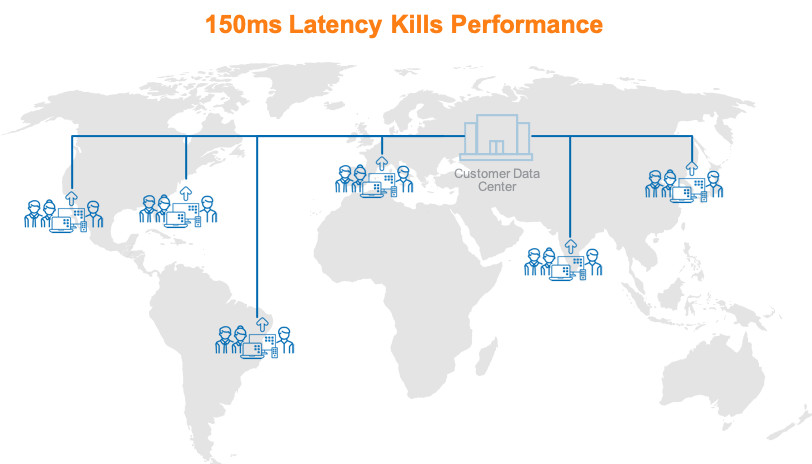
Users who are remote from the data center experience high-latency and therefore suffer from performance problems
This centralized architecture results in high-latency connections which cause a poor user experience. Over the years, various remoting protocols have been employed to optimize performance, but unfortunately, no one can change the laws of physics. High latencies will always kill performance, and protocol optimizations can only mitigate that so much.
In our experience, most legacy VDI implementations are complex for IT to implement and manage, but even worse, the end users experience slow response times that inhibit productivity. Users become frustrated and unhappy and that is not a formula for business growth.
VDI for the Cloud Needs a New Architecture
Legacy VDI was architected for one customer, one data center and five thousand users. The Workspot Desktop Cloud service is architected for the edge of the cloud, thousands of customers, hundreds of cloud regions, and millions of users. We had to start from scratch to build a comprehensive, enterprise-ready cloud desktop service using stateless micro-services and messaging architectures. Scalability is the first obvious problem we had to solve with this new architecture, but solving for scalability is more complex than meets the eye; we had to solve it in a distributed fashion that enables virtual desktops at the edge of the cloud. It’s the only solution that supports virtual cloud desktops as a turnkey service, while delivering the agility needed for business growth that has no boundaries.
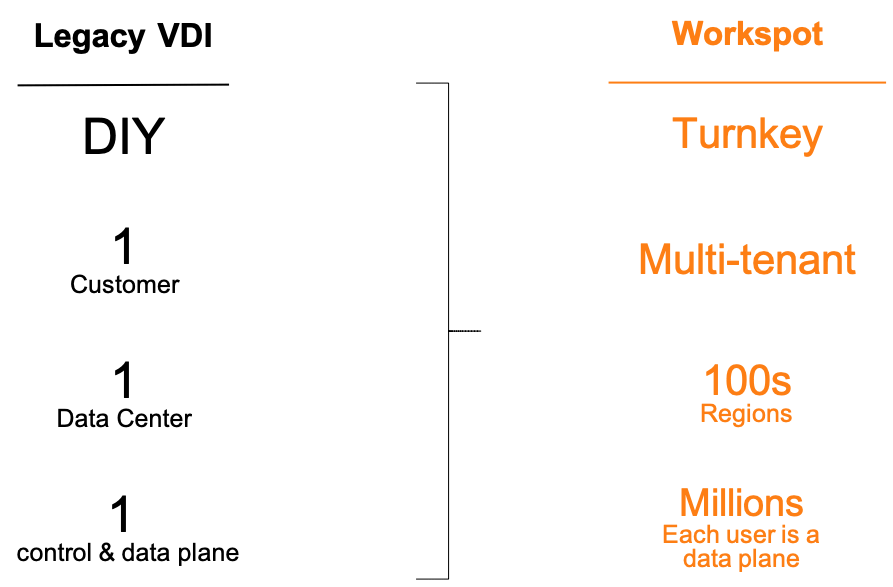
Workspot scales horizontally across cloud regions for planet-scale deployment
Edge-Native Virtual Desktops
A globally distributed cloud such as Azure needs a globally distributed VDI solution. What if you could use a single pane of glass to deploy desktops to the edge of the cloud region nearest each user? That’s precisely what Workspot’s innovative, “edge of the cloud” architecture enables: Edge-native virtual desktops.
Workspot enables every customer to deploy a cloud desktop which has been built from your corporate image and inherits all your established security and networking policies, including MFA. It is managed just like your physical PCs, using your standard enterprise tools – such as SCCM.
With 54+ Azure regions (and counting), now many users can be less than 25ms away from their cloud desktop. They are often connected using a super-fast (>10Mbps) local internet connection. Think about it: If you can watch a Netflix movie on your tablet, then you’ll probably see great performance using your cloud desktop.
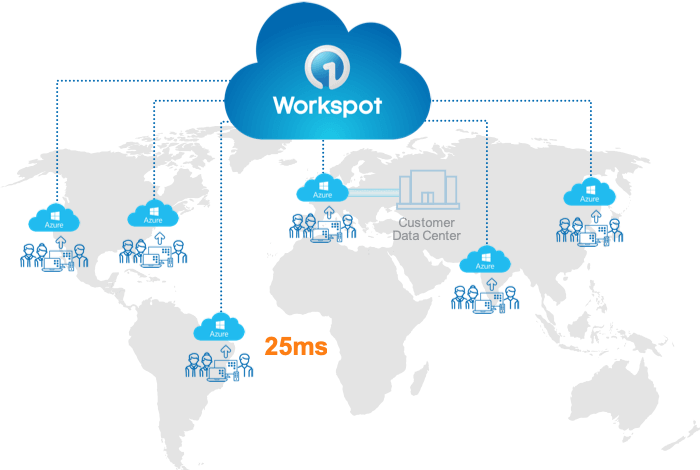
Many users can now be 25ms or less away from their cloud desktop
Making it Real – Edge of the Cloud Deployment
Let’s get real; here’s what happens in an actual customer scenario when the virtual desktop solution can take advantage of an edge-of-the cloud deployment. In this case the customer has a data center on the West Coast of the US where they run client server applications that are core to the business. A physical PC user in the Far East is experiencing over 500 ms latency over slow, expensive leased lines. In a Workspot-enabled, edge-of-the-cloud deployment, that user can now access an edge-native virtual desktop sitting in an Azure cloud region that is 25ms away and be connected over the Azure 30Gbps backbone all the way back to the US West Azure region. From there, the corporate data center is just a fast hop over an Azure ExpressRoute connection. The end result is faster, lower latency connections. Our customers have told us they see better-than-physical-PC performance.
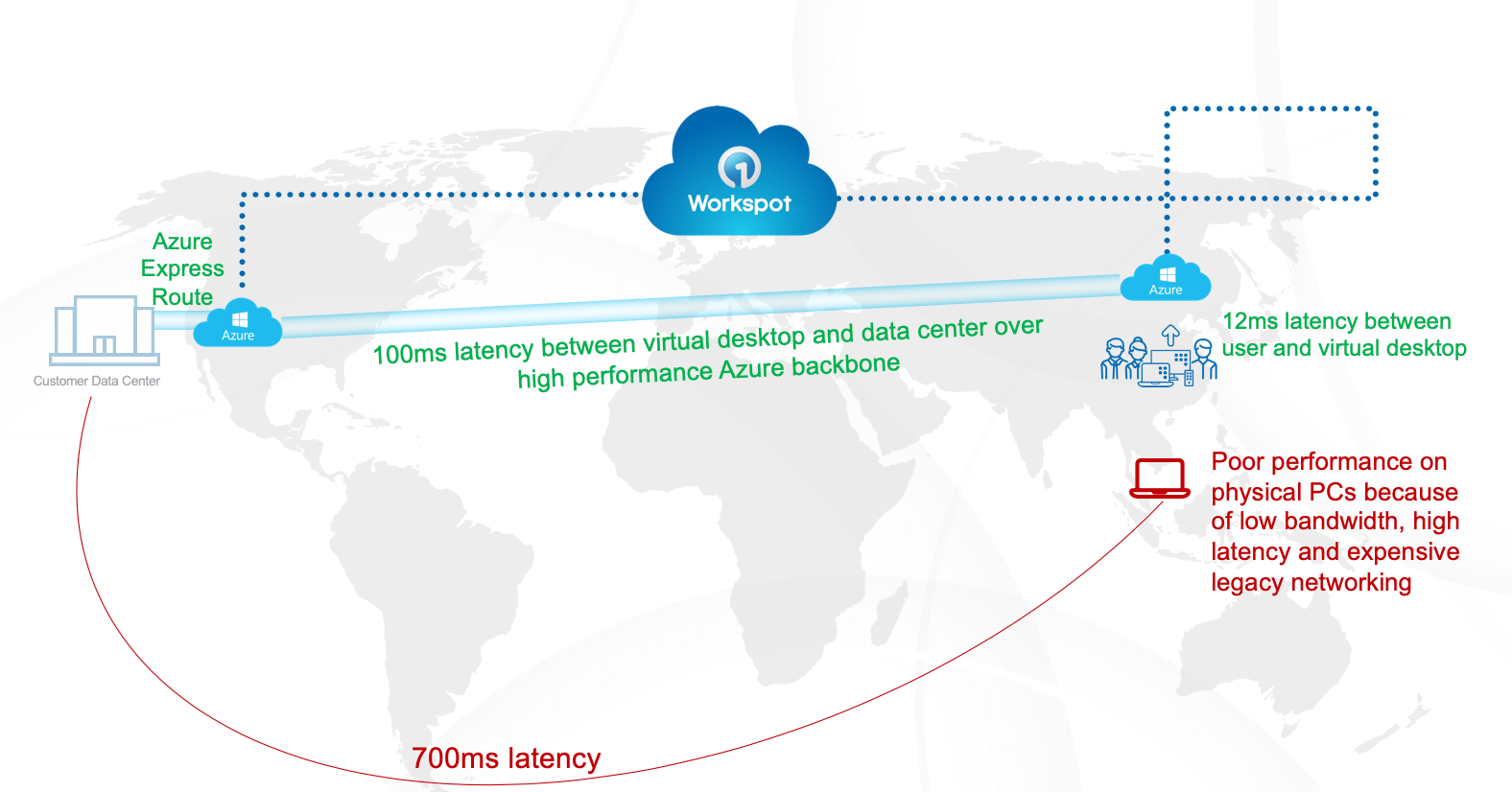
Workspot edge-native virtual desktops often deliver better-than-physical-PC performance
Get Ready – for Just About Anything!
Back to our initial question: “How many data centers do you have?”? The answer – 54 – is the number of Azure regions as of early 2019. However, the answer is going to be a much larger number in a few years! Imagine how well you can serve your users and the business with that many “data centers”! Imagine the business agility that comes with being able to spin up native-edge virtual desktops in minutes, anywhere in the world. Are you making technology choices that can accelerate company growth? At Workspot, we know where our towel is, and that means you can be confident about our technology, our business model and our absolute commitment to your success.
Cloud Native Architecture




